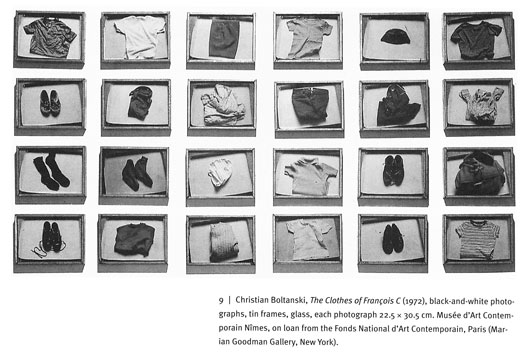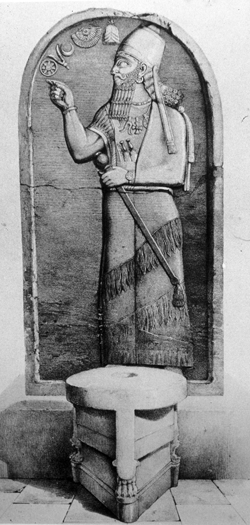Questions, ideas, notes for discussion
- This week we will be focusing on questioning the idea of the "statue" as a representational medium. Art historical approaches to ancient statuary usually follows the idea that statues as representations of individuals (like the figurines, or portraits) are secondary in relation to the real subjects that they re-present. This is a much broader problem we have been addressing concerning the problem of representation, i.e. the relationship between bodies, phenomenona of the real world versus their representations. Basic example what is the relationship between a (real) landscape (in the world) and a map (cartographic representation). Rather than seeing maps as reductive visual accounts of places, spaces, geographies, landscapes, current scholarship suggests that we see map as indexes of landscapes, extensions of landscapes in the thingly character, the objective materiality of maps. Maps as representations actually contribute to the material configuration of those landscapes (think of their use for military or colonial purposes!). Maps can be deviced as ideological, political tools to exercise surveillance over a country, a geography (US use of satellite imagery in Iraq is enormous!). As my colleague Chris Witmore recently argued in a public presentation, maps transport landscapes, through their portability, and in this way places are distributed. Then, maps cannot be passive representations of landscapes but active tools to shape those landscapes. Representations are very much part of the reality. The question then is: can we understand ancient statuary in these terms? Can we understand how they contribute to the making of the individuals (their identity, their subjectivity, their bodily appearance) of whom they are representations? Can we understand the performative nature and the agency of such objects in this context? It is then necessary to move from a mimetic understanding of representation to an indexical one. Thoughts?
- The idea of indexical representation suggests a tangible, material, residual continuity between the represented subject and the representation. Let me remind you David Summers's famous paradigm of the footprint (not only a representation of the foot itself, but also that of the subject's act of stepping on that surface, and by extension the whole body and its gestural performance). The footprint is a space, a dwelling which the body carves out through its performances. But it is also an identifiable, figural image that makes reference to the body. We must then understand the statues as a performative carving out of a space/place for the body to dwell. The resulting material object of this act (statue of the Mesopotamian king Gudea let's say) continuously refers to its subject's body (king Gudea's own body), by the help of its representationality and its technologies of production. Contemporary artists have worked on this issue for quite a while now. I am providing one example below. Botanski's use of clothing to present a portrait of a child is interesting: it overlaps nicely with Bahrani's example of the Assyrian "Substitute King" ritual, where the garments of the king is seen as an extension of the king's body, its kingly agency. One of the ways in which the randomly chosen farmer becomes the king is that he puts on the king's clothing. At the verge of this transformation, the farmer's body is salmu (representation) of the king's body.

Indexical Representation: Portrait of François by C. Boltanski.
Image Source: Ernst van Alphen, Art in Mind. The University of Chicago Press 2005, p.41 fig.9.
- In the case of Assyro-Babylonian salmu, then, the representation always has a material impact on the real world as that salmu is unquestionably a part of the real world, not a passive representation of it (as most art historians would like us to believe). On the contrary, the representations, the effigies, the figurines, the cave paintings, the statues of gods and kings, Trobriand canoe-prows, fear-inducing shields (to follow Gell's examples) are recruited militantly to make changes in the material worlds. In that sense they are distributed agencies.

Commemorative monument as a site of ritual: Stele of the 9th c. BC Assyrian king Assur-nasir-pal II in the Ninurta Temple Courtyard at Kalhu (Nimrud).
- One vital question that we will need to explore is the nature of the cult image. Speaking of the statue/relief/figurine that functions as a venerated image of a deity, the complex relationship between the cult image and the supernatural being/deity is crucial. This is an ontological/representational relationship that needs much unpacking, as Meskell, Bahrani and Frontisi-Ducroux attempt to do. Quoting Assmann in Meskell (90), "the statue is not the image of the deity's body, but the body itself. It does not represent his form but rathers gives him form. The deity takes form in the statue, just as in a sacred animal or natural phenomena." This is very interesting as it reminds me Gell's idea of the deity dwelling in a statue. The material substance of the statue is not simply a preconceived, predesigned container for the supernatural being, but it is its dwelling which takes shape because and by virtue of the deity's act of dwelling. Juts as each of us shape our houses with our bodily habits, particular identities, the things we like to keep around ourselves etc, the statue as a spatialized and materialized dwelling of the deity takes shape from its active practices of dwelling. The deity then is anchored in the statue, materialized, localized, manifested. The making of the statue, in a way, transforms the cult. This we may call, following Meskell, the conflation of the represented and the representation, or the ambiguity between the two. Following Frontisi-Ducroux, the statue is literally the "binding" of the fleeing cult, its anchorage. This we may call the concretization. The statue then becomes imbued with animacy, not simply because of the deity's habitation of its material substance but also because we have to consider all objects through a sound concept of animacy as well (discussed in previous weeks, remember Knappett?).
- Divine images
- Concealment/distance
- Enclosure in the cult place- The Site of Sight, The Right to Sight, The Rite of Sight (Renata Holod)
- Performative revealing of the image:
- Emotional responses during cult ceremonies
- Performativitiy of the image, performativity of human agents
- Statues and reliefs as animate beings, social beings in the public sphere
- Concealment/distance
